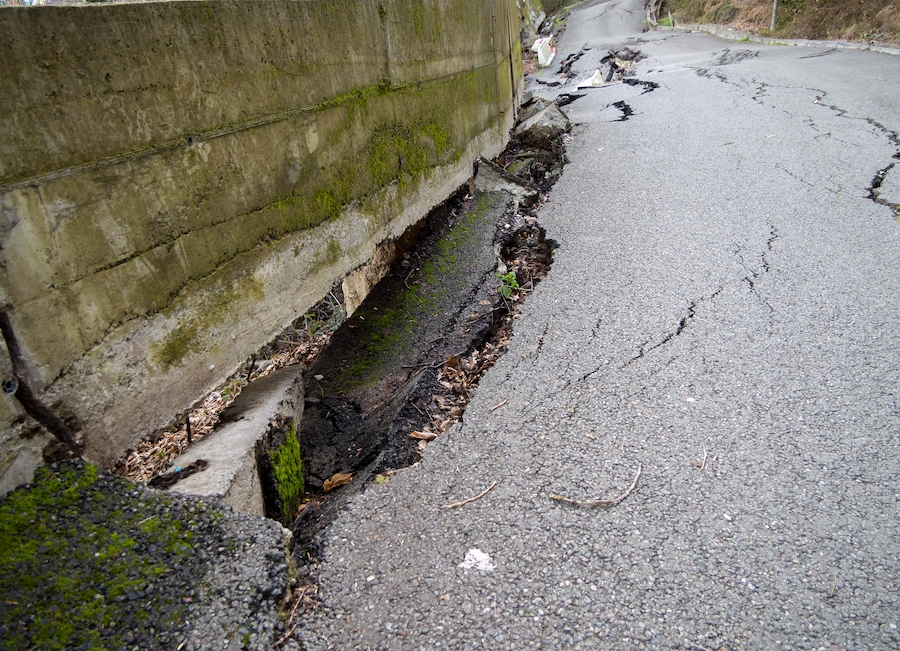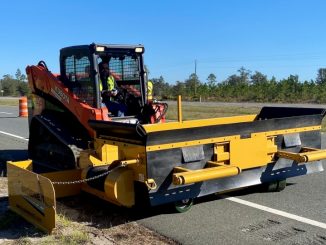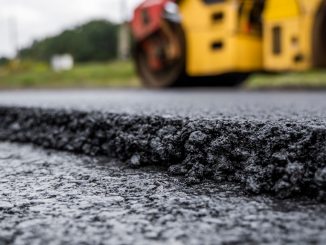
View the complete article here.
Understanding the composition and quality of asphalt is fundamental to its performance and durability. The composition—which includes aggregates, binder, and fillers—must be carefully balanced to ensure the pavement can withstand traffic loads and environmental conditions. The quality of these materials, along with proper mix design and laying processes, significantly affects the asphalt’s longevity. Factors such as temperature during application and compaction, as well as regular maintenance, play a crucial role in determining the final quality and suitability of asphalt.
Understanding Asphalt Composition and Quality
Asphalt is a versatile and durable paving material widely used for constructing roadways, parking lots, and airports. Its ability to withstand heavy loads and resist weather changes makes it a preferred choice for infrastructure. However, the longevity and performance of asphalt pavements are significantly influenced by their composition and the quality of materials used.
Composition of Asphalt
Asphalt pavement is composed of a mixture of aggregates, binder, and sometimes fillers that provide the structure and durability of the surface. The components include:
- Aggregates: These are the stones, gravel, and sand that constitute the bulk of the asphalt mixture. They are chosen based on size, strength, and durability to ensure that the pavement can bear traffic loads without distress. The aggregates must be clean and free from any materials that might affect the binding with the asphalt binder.
- Binder (asphalt cement): This is the glue that holds the aggregates together. It is a by-product of petroleum refining and has viscoelastic properties that allow the asphalt to be flexible yet strong. The quality of the binder is critical, as it affects the pavement’s resistance to various stresses—including vehicle loads and environmental conditions.
- Fillers: These are fine particles that can fill in the gaps between the aggregates and add to the mixture’s stability. They can also affect the binder’s viscosity and the asphalt’s overall performance.
Factors Affecting Asphalt Quality
The quality of asphalt can be affected by various factors, from the point of mix design through to the laying process:
The proportions of aggregates and binder, along with the type of each component, are crucial. A well-designed mix will have the right balance between durability, flexibility, and resistance to various stresses. This is achieved through rigorous testing and adherence to standards.
Temperature and weather play a significant role in asphalt quality. Hotter temperatures can cause the binder to become too soft, leading to rutting, while colder temperatures can lead to cracking as the asphalt contracts. The weather at the time of laying is also critical. For example, rain can cool the asphalt too quickly—affecting its compaction and ultimately the quality.
The process of compacting the asphalt after it is laid is crucial to ensure that the aggregate particles are closely knit together with the binder. Proper compaction increases the asphalt’s load-bearing capacity and extends its lifespan.
Over time, the binder in asphalt can become brittle due to oxidation—which occurs when it reacts with oxygen in the air. This leads to reduced flexibility and increased susceptibility to cracking.
The amount and type of traffic, as well as the weight of vehicles passing over the pavement, can affect the asphalt’s performance. Excessive loads can lead to deformation and cracking.
Regular maintenance, including seal coating and crack filling, can significantly extend the life of asphalt pavement by protecting the binder from oxidation and the pavement from water intrusion.
Pre-Inspection Preparation
Prior to conducting an on-site asphalt inspection, thorough preparation is vital to ensure both the accuracy of the inspection and the safety of the personnel involved.
Inspectors should equip themselves with a range of tools—including surface evaluation instruments like measuring wheels and straightedges, core drilling machines for sample extraction, density gauges for assessing compaction, and thermometers to monitor material temperature.
Additionally, safety gear such as cones, barriers, and high-visibility vests are essential—alongside cameras or other recording devices to document findings.
Safety measures are paramount. Inspectors must don full Personal Protective Equipment (PPE)—including hard hats, safety glasses, and steel-toe boots.
Traffic control measures must be implemented effectively to safeguard both the inspection team and the public, with pre-inspection briefings held to communicate the day’s objectives and potential hazards.
All equipment should be checked for proper operation, and inspections should be scheduled with consideration for weather conditions to avoid any compromise in safety or data integrity.

Visual Inspection Techniques
Conducting a visual inspection is an essential step in maintaining the health and longevity of asphalt pavement. This inspection is crucial not just for identifying current issues but also for predicting potential future problems. At the very least, the following should be checked:
- Cracking: This is one of the most common issues and comes in various forms. Longitudinal cracks run parallel to the direction of traffic and may be caused by pavement fatigue, reflection of an underlying crack, or poor joint construction. Transverse cracks run perpendicular to the direction of traffic and are often caused by shrinkage of the asphalt pavement or temperature fluctuations. Alligator cracks, which resemble the skin of an alligator, signal a failure in the structure’s sub-base and can lead to more significant issues if not addressed promptly.
- Potholes: These are openings in the road that reveal the pavement’s layers. Potholes are usually formed when water seeps into the pavement through unsealed or improperly sealed cracks. When the water freezes, it expands—and as it melts, it contracts—leaving a void that can collapse under the weight of traffic. These are not only a sign of aging asphalt but also of neglected maintenance since they typically develop from pre-existing cracks.
- Rutting: These are grooves or depressions in the pavement that follow the wheel paths. Ruts are typically caused by a consolidation or lateral movement of the pavement material due to repeated traffic loads. They are particularly concerning because they can collect water, leading to hydroplaning risks for vehicles.
The visual inspection process also involves assessing the severity and extent of these issues. Small, isolated cracks might be a sign of normal wear—while widespread cracking patterns could indicate a need for more comprehensive repairs or full pavement replacement. Similarly, the presence of a few potholes may require simple patching—but numerous or large potholes might reflect a systemic failure that needs addressing.
In addition to identifying the specific damages, the inspector assesses the pavement’s overall texture and color uniformity—which can provide further insight into the pavement’s condition. For example, a faded color might indicate significant aging and weathering—suggesting that the surface treatment may be necessary.
Physical Testing Methods
Physical testing is a pivotal aspect of determining the actual condition of asphalt pavement beyond what can be seen visually. Core sampling is one such crucial test where cylindrical sections of the pavement are extracted for in-depth analysis. This process allows for the evaluation of the pavement’s layer thickness, the composition of materials, and the level of compaction achieved—as well as the detection of any subsurface issues that could affect the pavement’s integrity.
Another significant physical test is conducting density tests. These tests are critical for verifying the compaction of asphalt, identifying potential voids within the pavement structure, and predicting the pavement’s ability to bear traffic loads. Density tests, which can be performed using non-nuclear or nuclear methods, provide insights into the pavement’s durability and its resistance to future damage.
In terms of surface characteristics, techniques like profiling and sand patch testing are employed to assess the pavement’s evenness and texture. Profiling involves measuring deviations from the pavement’s surface to evaluate ride quality, while sand patch testing measures the macrotexture—affecting both tire grip and water drainage. In more advanced applications, 3D surface scanning technologies create a detailed topographical map of the pavement—offering a comprehensive analysis of its condition. These tests collectively ensure that the pavement meets safety and comfort standards for vehicular travel, rounding out the overall assessment of the asphalt’s health and serviceability.

Temperature and Weather Considerations
Temperature plays a crucial role during the laying and curing phases of asphalt. Hot-mix asphalt needs to be laid and compacted at specific temperatures to ensure proper adhesion and compaction. If the asphalt cools too quickly, it may not compact properly—leading to a weaker pavement. Conversely, if the temperature is too high, the asphalt can become overly fluid—making it difficult to achieve a uniform surface. The ideal temperature range for laying asphalt is typically between 50°F and 85°F (10°C and 29°C).
Curing time is also affected by temperature. Asphalt needs time to ‘cure’ and achieve its full strength. High temperatures can speed up this process, while cooler temperatures can significantly slow it down, potentially leading to premature traffic loading and subsequent damage.
How Weather Conditions Affect Inspection and What to Look For
Weather conditions not only impact the laying and curing of asphalt but also play a pivotal role during inspection. Inspectors must be aware of the following:
- Moisture: Rain or standing water can obscure surface defects such as small cracks or begin to wash away loose material. Inspectors should look for drainage issues or areas where water may be undermining the pavement.
- Temperature fluctuations: Extreme cold can cause the pavement to contract and crack, while heat can make the asphalt soft and more prone to rutting. Inspectors need to account for these conditions when evaluating the pavement’s condition.
- Sun exposure: Prolonged sun exposure can lead to oxidation, which dries out the asphalt binder and makes the pavement brittle. This can be identified by a faded, gray appearance—and inspectors should check for brittleness and surface disintegration.
Asphalt Pavement Thickness and Uniformity
Ensuring the right thickness and uniformity of asphalt pavement is crucial for the longevity and performance of paved surfaces. Here are the key considerations and steps involved in the process…
Measuring Pavement Thickness
To measure the thickness of asphalt pavement, professionals use a variety of tools ranging from simple tape measures for small-scale projects to non-destructive testing equipment like ground penetrating radar for larger areas. The thickness must comply with the specifications set out in the design of the pavement structure, which is typically determined by the expected load and traffic volume. The following methods are recommended:
- Core sampling: This is a common method where a core of the asphalt is drilled and removed to measure its thickness. This method provides a direct and accurate measurement but is destructive to the pavement.
- Non-destructive methods: These include the use of infrared scanners, ultrasonic waves, or electromagnetic methods to estimate thickness without damaging the pavement.
Ensuring Uniformity Across the Asphalt Surface
Uniformity is essential for the structural integrity and durability of the pavement. Here are some methods to ensure uniformity:
- Proper compaction: Using rollers to evenly compress the asphalt mix is vital. The number of passes with the roller can affect the uniformity.
- Temperature monitoring: Asphalt needs to be laid down and compacted at optimal temperatures. Too hot, and the asphalt may not compact properly—too cold, and it may harden before proper compaction.
- Quality control during mixing: Ensuring the mix has a uniform temperature and consistent material composition is important. Variations can lead to weak spots.
- Regular inspections: Visual inspections, along with regular surface testing, can identify areas of non-uniformity early on—allowing for corrective measures to be implemented.

Documenting the Inspection
During asphalt pavement inspections, meticulous documentation is essential. Inspectors should accurately record details such as inspection date, weather conditions, and specific observations—including the size and severity of any pavement distress.
Utilizing standardized forms ensures consistency, while referencing standards highlights any deviations.
Equally important is photographic evidence—which provides visual validation, aids in monitoring changes over time, and communicates issues effectively. Photos should be clear, well-labeled, and stored systematically for easy retrieval.
Together, detailed written records and systematic photographic documentation form the backbone of a comprehensive pavement inspection process—imperative for maintenance and liability considerations.
Post-Inspection Procedures
After the completion of an asphalt pavement inspection, the focus shifts to the post-inspection procedures—which are critical in translating findings into actionable plans.
Analyzing the Collected Data
The first step involves a thorough analysis of the collected data. This includes reviewing all notes, measurements, and photographs to assess the condition of the pavement. The data should be organized and compared against industry standards and previous inspection records to determine the deterioration rate and identify any patterns or anomalies in pavement performance.
Data interpretation: Technicians should interpret the data to understand the underlying causes of any observed damages, such as structural failures or surface wear.
Trend analysis: By analyzing trends over time, inspectors can predict future pavement behavior and potential failure points.
Making Recommendations for Maintenance or Repairs Based on Inspection Findings
Based on the analysis, a detailed set of recommendations should be compiled—with the following considered:
- Prioritization: Recommendations should be prioritized based on the severity of the pavement distress and the potential impact on safety and serviceability.
- Maintenance strategies: Suggest appropriate maintenance interventions, such as sealing cracks or patching potholes, to address minor issues before they escalate.
- Repair pans: For more serious damage, outline repair plans that might include resurfacing or reconstruction—taking into account the cost-benefit analysis of each option.
- Documentation: All recommendations should be documented in a final report that includes justifications for each suggested action, ensuring that the decision-making process is transparent and accountable.
The post-inspection procedures are a crucial step in pavement management, ensuring that the inspection results are effectively used to maintain and extend the life of the pavement infrastructure.
View the complete article here.
What are the key components of asphalt composition?
Asphalt composition comprises aggregates, binder (asphalt cement), and fillers, with each component playing a crucial role in ensuring pavement durability and performance.
How does weather impact asphalt inspection and quality?
Weather conditions, including temperature, moisture, and sun exposure, can affect asphalt quality and inspection outcomes by influencing laying, curing, and revealing surface defects.












































